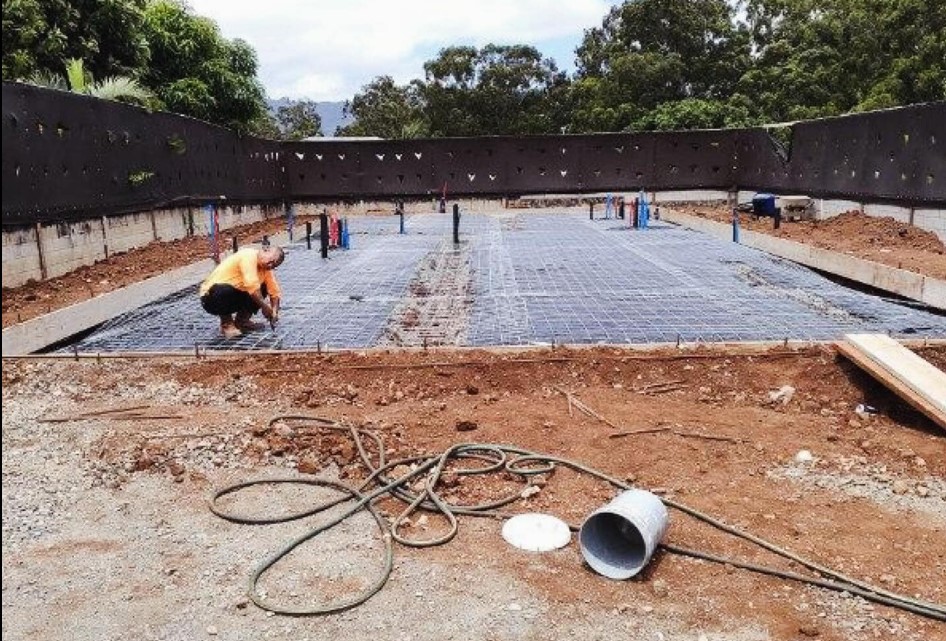A dry basement is essential for protecting your home’s foundation, preventing mold growth, and keeping your living space safe and comfortable. Water intrusion can cause costly damage, weaken structural integrity, and create an unhealthy indoor environment.
Since basements are naturally prone to leaks due to their location below ground level, choosing the right waterproofing method is one of the best investments you can make for your home.
Not every basement has the same needs, and the right solution depends on the source of moisture, soil conditions, and the overall structure of your property. By understanding the different basement waterproofing options available, you can make an informed choice that provides lasting protection and peace of mind.
Interior Sealants and Coatings
Interior waterproofing is often the first line of defense against minor moisture problems. Sealants and waterproof coatings can be applied directly to basement walls and floors to block water penetration and reduce dampness.
- Apply epoxy or waterproof sealants to fill small cracks and gaps.
- Use waterproof paint or masonry coatings to create a moisture barrier.
- Ensure proper surface preparation before applying products for better adhesion.
- Pair sealants with a dehumidifier to control indoor humidity levels.
While interior coatings are not a permanent solution for major leaks, they provide an affordable way to manage light moisture and improve air quality inside your basement.
Interior Drainage Systems
If water frequently enters your basement during heavy rains, an interior drainage system may be the right solution. This method captures water inside and redirects it to a sump pump for removal.
- Install French drains along the basement perimeter to collect groundwater.
- Use a sump pump to move water away from your foundation.
- Choose a system with a battery backup pump to prevent flooding during power outages.
- Regularly inspect and maintain the drainage system for best performance.
Interior drainage works well for homes with recurring seepage and provides long-term protection when combined with other waterproofing methods.
Exterior Waterproofing Solutions
For homes with serious water intrusion issues, exterior waterproofing tackles the problem at its source. By addressing water before it reaches the basement walls, this method offers the most comprehensive protection.
- Excavate around the foundation to apply a waterproof membrane or sealant.
- Install exterior French drains or weeping tiles to redirect water away from your home.
- Add protective coatings or polymer-based sealers to block water penetration.
- Improve grading around your home to keep rainwater from pooling near the foundation.
Although exterior waterproofing is more expensive and labor-intensive, it is one of the most effective long-term solutions for keeping basements dry.
Foundation Crack Repairs
Even small cracks in your foundation can allow water to seep into the basement. Addressing these issues early prevents bigger problems down the road.
- Use polyurethane or epoxy injections to seal active cracks.
- Monitor repaired areas regularly to ensure the seal holds.
- Consider professional repair if cracks are large or spreading.
- Combine crack repairs with exterior or interior waterproofing for added protection.
Foundation crack repair is often an essential part of a complete waterproofing plan, especially for homes in areas with shifting soil or frequent rain.
Exterior Landscaping and Drainage Improvements
Sometimes, waterproofing can be as simple as improving the landscape around your home. Proper yard grading and drainage control reduce the risk of water pooling against your foundation.
- Slope soil away from the house to direct rainwater outward.
- Install downspout extensions to carry water further from the foundation.
- Add gravel or drainage channels in areas prone to standing water.
- Use native plants and landscaping features that naturally absorb excess moisture.
Landscaping and drainage improvements are cost-effective solutions that work best when paired with interior or exterior waterproofing systems.
Basement waterproofing is not a one-size-fits-all solution. The right method depends on the severity of your water issues, your budget, and the design of your home.
From simple interior sealants to full exterior waterproofing systems, each option plays an important role in keeping basements dry and protected.
By combining practical strategies such as crack repair, interior drainage, and exterior grading, you can prevent water damage and maintain a healthier, more valuable home. Choosing the right waterproofing approach today ensures long-lasting peace of mind and protection for your family and property.

